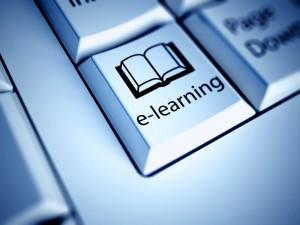Technological advancements and growth of the internet have changed the way people learn and train. The one-size-fits-all approach has given way to personalized and innovative methods that make learning more interesting and engaging. Today, it is possible to help students – whether in an online academic setting or corporate training – prepare an individualized learning plan based on their needs, strengths, interests and skills.
The key to such personalization is a learning management system (LMS). Because delivering richer content to your target audience is the best way to keep your learners engaged, you need a learning content management system (LCMS) that compliments your LMS. While your LMS manages your employees, your LCMS takes care of your content creation.
Benefits of personalization in e-learning
In today’s digital age, people expect to get what they want, when they want it. So, it’s only natural that e-learning is personalized to make an impact. With an individual’s data footprint, employers can know their employees’ interests, as well as when their skills need to be upgraded. With the help of data, e-learning can focus more on individual learners – which is why it’s more effective and responsive than traditional classroom training. Mobile learning has also made personalization essential. Because about 37.2% of the workforce is mobile, organizations must deliver training that’s easily accessible.
Learners leave a specific digital trail, and like other industries, e-learning can also use big data to gain insights about individuals. With the right kind of tools and systems, you can not only use such data to analyze the learning patterns of your students or employees, you can also predict and devise their learning plan.
The power of personalization in e-learning

Personalized e-learning can make learning easy, interesting, and effective. Personalized e-learning is all about customizing the learning environment, the learning content, and the interaction between the learner, facilitator and the content.
So, personalized e-learning is all about providing a customized approach to accelerated e-learning. It is a powerful way of delivering the content to your target audience in a format that is easier to assimilate, consume and retain.
While traditional e-learning had a facilitator-led approach, personalized e-learning follows a learner-centric approach. Personalized e-learning considers the needs of individual learners and delivers to each according to their need.
In order to improve the user experience of your learners, you need to know how to transform your LMS into an intelligent performance engine. Here are some fundamental steps.
- Personalize your platform – A user-friendly interface is essential. As soon as the users log in, the tasks, courses, and activities should be clearly visible and accessible. Make sure that the search bars are tailored towards a specific user’s training needs and that the process is easy. The platform should allow users and clients to visualize their data easily and take remedial actions so they can improve their performance accordingly.
- Work on a multi-platform approach – Unless your business is for some reason committed to strictly onsite online training, most employees are likely to access training courses on their mobile phone or laptop rather than a desktop computer. Your training content should likewise be easily accessible on every platform. With micro learning and mobile apps coming into play, learners now have the opportunity for contextualized learning. Contextualized learning allows learners to refresh on quick topics as needed, which maximizes comprehension.
- Be able to leverage data and analytics – Organizations around the world collect and store data. Using this data to your advantage is also part of personalization. Based on the needs of the individual users, the courses and training programs should be recommended by intelligent solutions. Systems should collate this data to synthesize information and offer relevant learning plans.
Recommendations should be based on metrics that dictate the learning needs of the users. It helps create actionable insights that allow learners to identify their weak areas to target for improvement, as well as make topic and course suggestions. These insights can be the basis for creating actionable training plans to increase individual performance and achieve organizational goals.
If you want your employees or students to get the most from their e-learning experience, eServe provides industry-leading LMS education tools that help managers, HR professionals and instructional designers create and redistribute their content over multiple outlets and formats. Contact us to learn more.

